Growing Coleus ‘Painted Nettles’ For Jungle-Style Planting From An Indonesia Native

HOUSEPLANTS > COLEUS

Elizabeth is a Permaculture Garden Designer, Sustainability Consultant and Professional Writer, working as an advocate for positive change. She graduated from the University of St. Andrews with an MA in English and Philosophy and obtained a Diploma in Applied Permaculture Design from the Permaculture Association.
Reviewed By COLIN SKELLY

Colin is a Horticulturist and Horticultural Consultant with experience in a range of practical and managerial roles across heritage, commercial and public horticulture. He holds the Royal Horticultural Society’s Master of Horticulture award and has a particular interest in horticultural ecology and naturalistic planting for habitat and climate resilience.
IN THIS GUIDE
COLEUS GUIDES
Coleus, also known as Solenostemon scutellarioides, is a popular ornamental houseplant which can be grown outdoors during the summer in the UK.
In this guide, you will learn more about this attractive foliage plant, and how to grow it and take care of it year-round.
Native to Indonesia, this plant is part of the family of mint.1Coleus | plant. (2023, March 6). Encyclopedia Britannica. Retrieved March 14, 2023, from https://www.britannica.com/plant/coleus
Overview
| Botanical Name | Coleus scutellarioides |
| Common Name(s) | Painted Nettle Plant |
| Plant Type | Perennial Houseplant |
| Native Area | Indonesia |
| Hardiness Rating | H1C |
| Foliage | Evergreen |
| Flowers | Blue |
| When To Plant | May-June |
| When To Prune | September |
Sunlight
Preferred
Full Sun or Partial Shade
Exposure
Sheltered
Size
Height
0.5 – 1M
Spread
0.1 – 0.5M
Bloom Time
Spring / Summer / Autumn
Soil
Preferred
Most fertile soils
Moisture
Moist but well-drained
pH
Any
This species has been categorised as Plectranthus, then as Solenostemon, but is now considered to be part of the expanded Coleus genus.2Paton, A., Mwanyambo, M., Govaerts, R., Smitha, K., Suddee, S., Phillipson, P. B., Wilson, T., Forster, P. I., & Culham, A. (2019). Nomenclatural changes in Coleus and Plectranthus (Lamiaceae): a tale of more than two genera. PhytoKeys, 129, 1–158. https://doi.org/10.3897/phytokeys.129.34988
This plant is also known by the common name painted nettle.
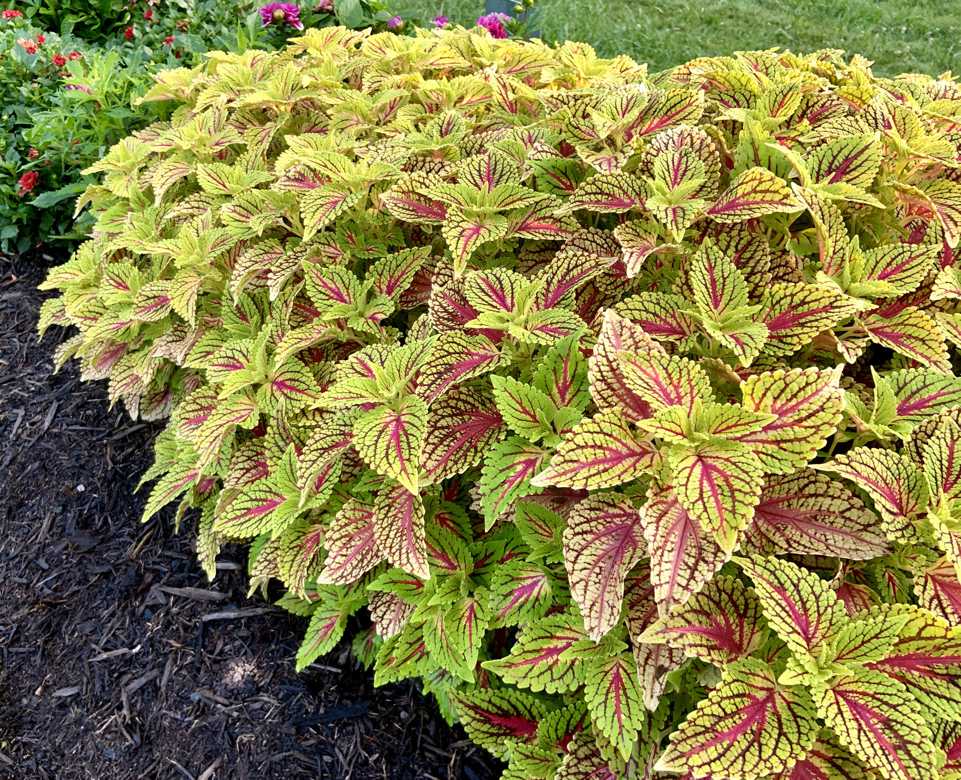
This reflects its relationship to Dead Nettles which are also in the mint family.3Red dead-nettle. (n.d.). The Wildlife Trusts. Retrieved March 14, 2023, from https://www.wildlifetrusts.org/wildlife-explorer/wildflowers/red-dead-nettle
Coleus Varieties
Varieties of C. scutellarioides which have RHS Awards of Garden Merit are:
- ‘Balcenna’
- ‘Black Prince’
- ‘China Rose’
- ‘Combat’
- ‘Crimson Ruffles’
- ‘Gay’s Delight’
- ‘Juliet Quartermain’
- ‘Lord Falmouth’
- ‘Picturatus’
- ‘Pineapple Beauty’
- ‘Pineapplette’
- ‘Pink Chaos’
- ‘Redhead’
- ‘Roy Pedley’
- ‘Royal Scot’
- ‘Trusty Rusty’
- ‘Walter Turner’
- ‘Winsome’
- ‘Wisley Tapestry’
Planting
Painted nettles are popular for summer bedding schemes and for exotic, or jungle-style planting schemes, and are commonly grown as houseplants or in conservatories in the UK.
Though perennials, they are often grown as annuals when grown outside in temperate climes, though they can also be kept year-on-year if protected from frost and cold and brought inside for winter, or grown inside year-round.

Purchase coleus plug plants in early spring and grow them indoors until after the last frost date in your area, or when the weather has warmed.
The best time to plant out is in May or June, once the weather has reliably warmed and there is no risk of frost.
Be sure to harden off plants grown indoors before they are planted out so that they become accustomed to outdoor conditions.

If growing coleus outside, it is important to choose a suitable spot.
They can work well in a garden border, alongside other summer bedding plants and also look nice in containers.
Details of where to place coleus, outside and indoors, are provided later in this guide.
Growing From Seed
Coleus can be grown from seeds planted under glass in early spring.
However, it should be noted that cultivars may not come true.
Usually, coleus is purchased as a plug plant, summer bedding plant, or as a houseplant.
Plant Care
Light levels and water are the most important considerations when growing and caring for coleus.
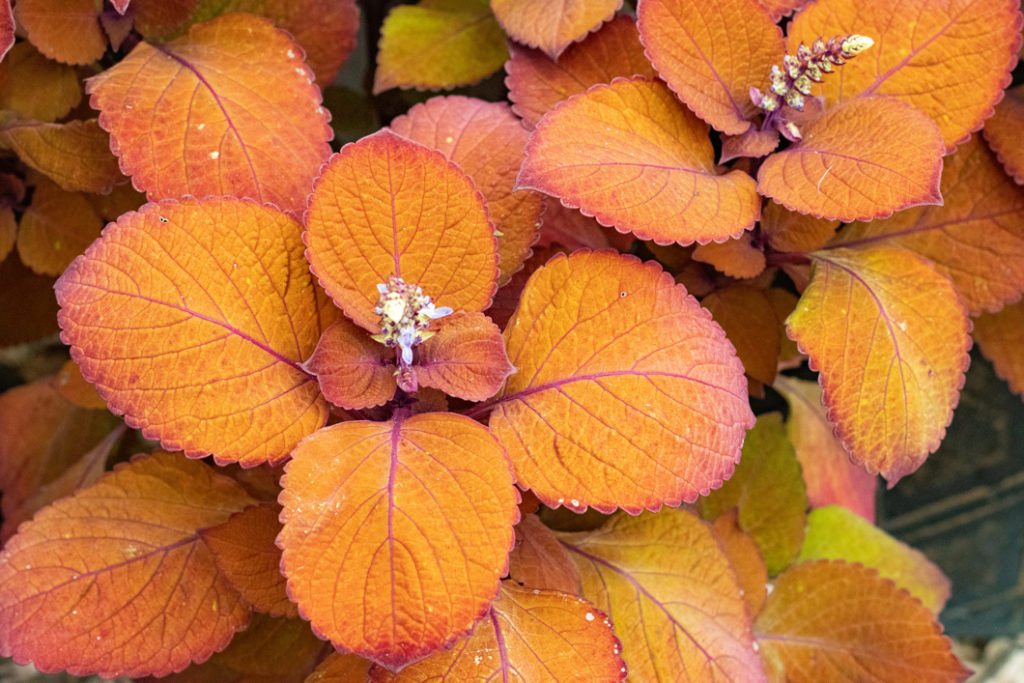
Get these things right and you should not find this too challenging a plant to grow.
Light & Temperature
Coleus is a tender plant which cannot cope with temperatures below 5-10°C.
It can either be grown inside year-round or placed outside in a sheltered spot during the summer months.
Coleus like a position in full sun or partial shade, and will do well indoors in a reasonably bright location, which gets a little bit of direct sun.
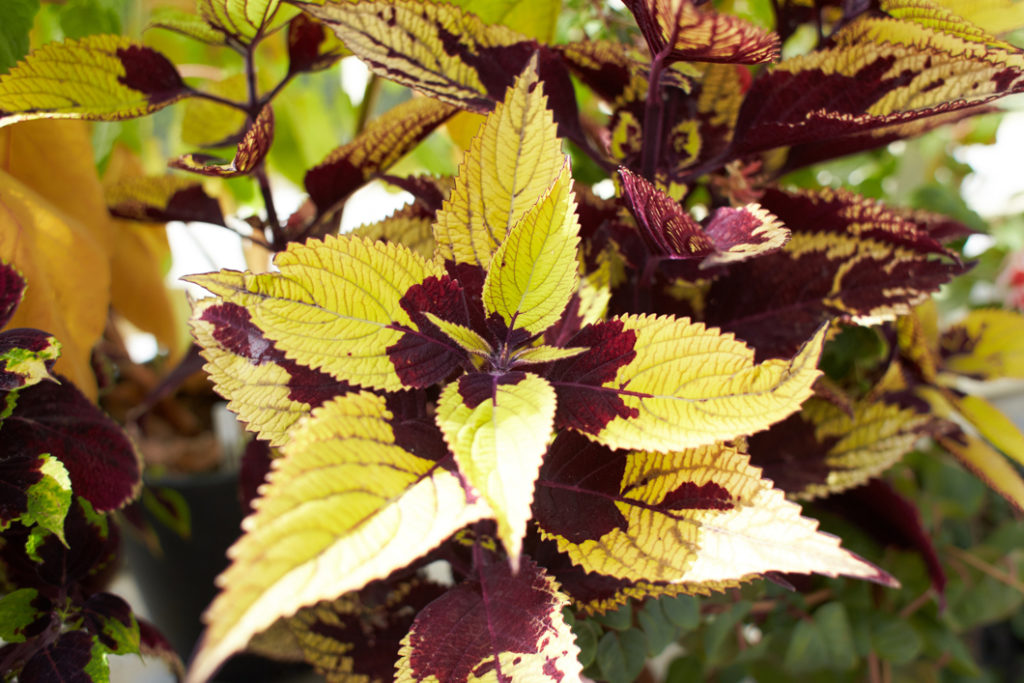
Coleus’ colourful foliage will be at its best when they have some light or dappled shade, but they do need some bright light each day, whether grown indoors or outside.
A south or east-facing aspect with morning sun can be ideal.
Soil
These plants require moist but well-drained soil or growing medium, though are unfussy when it comes to the specific type or soil pH.
When growing in pots or containers, a high-quality loam-based potting mix will be ideal.
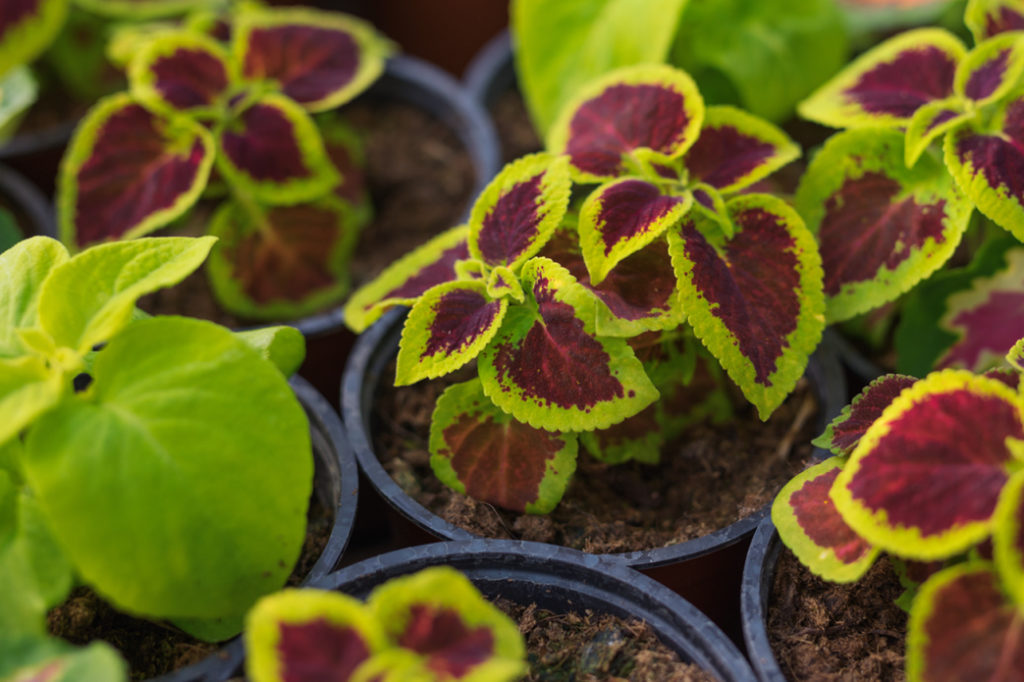
Whether growing in the ground or in pots, ensuring adequate moisture while also making sure there is free drainage is the balancing act that you have to tread.
Watering
Water moderately, aiming to keep the soil or growing medium moist throughout the growing season.
Do not allow the soil or growing medium at a depth of around 5cm below the surface to dry out.
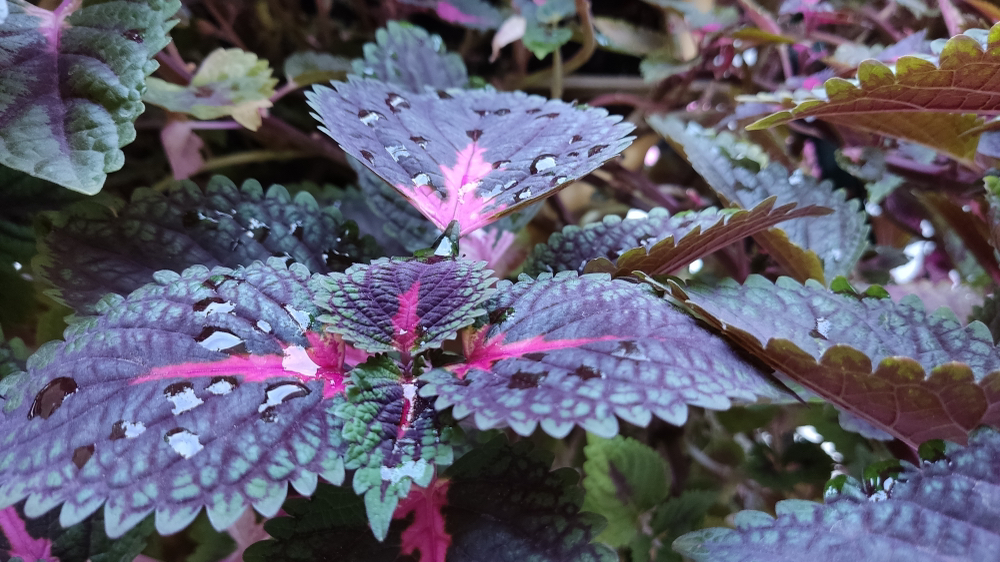
Watering needs will be lower over the winter months indoors.
Coleus typically like a high humidity level, so mist regularly if the air inside your home is dry, so mist regularly if the air inside your home is dry.
Feeding
Coleus does not usually require additional feeding.
However, if the plant seems lacklustre, you can feed during the growing season with an organic liquid plant feed suited to houseplants when growing in pots.
Pruning
Pinching out the growing tips of the plant in summer can encourage bushiness.
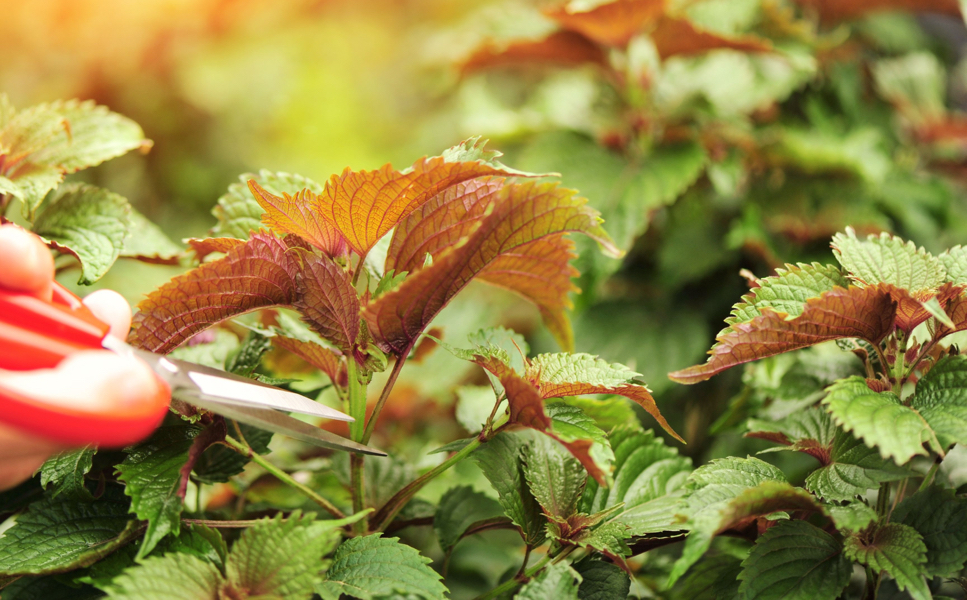
The plants can also be pruned back when bringing outdoor-grown specimens back indoors in early autumn.
Overwintering
Coleus used as summer bedding can be lifted and placed into pots to bring inside in September.
Alternatively, cuttings can be taken in summer to propagate the plants.
Container Growing
Growing coleus in pots, either indoors or placed on a patio during the summer and brought inside in winter, can be a good idea.
Choose a pot which retains moisture relatively well, but drains freely.
Fill with a peat-free, loam-based potting mix.
Potting & Repotting
Typically, coleus will grow to a size allowed by the pot size.
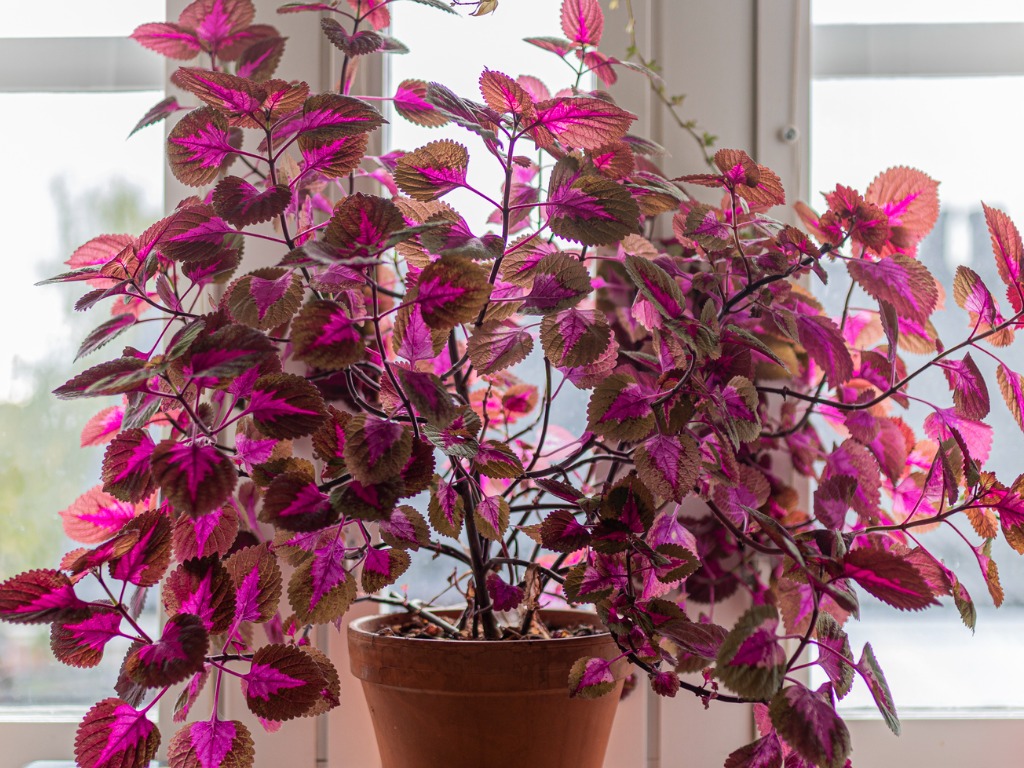
Trim back outside grown specimens of coleus if required at the end of the summer season outdoors, so it will be comfortable in the same pot, or choose a somewhat larger pot to accommodate the plant as it grows.
Propagation
Taking coleus cuttings in summer is a relatively easy way to produce new coleus plants which are clones of the parent plant.
“If I want to keep your coleus for the following growing season, I find the easiest way to do so is to take cuttings in late summer and keep them as rooted cuttings in a warm greenhouse or bright window sill over winter before potting on the following spring,” shares Colin Skelly, a Horticultural Consultant.
“This will save space for storing larger plants and provides vigorous young plants for re-planting.”
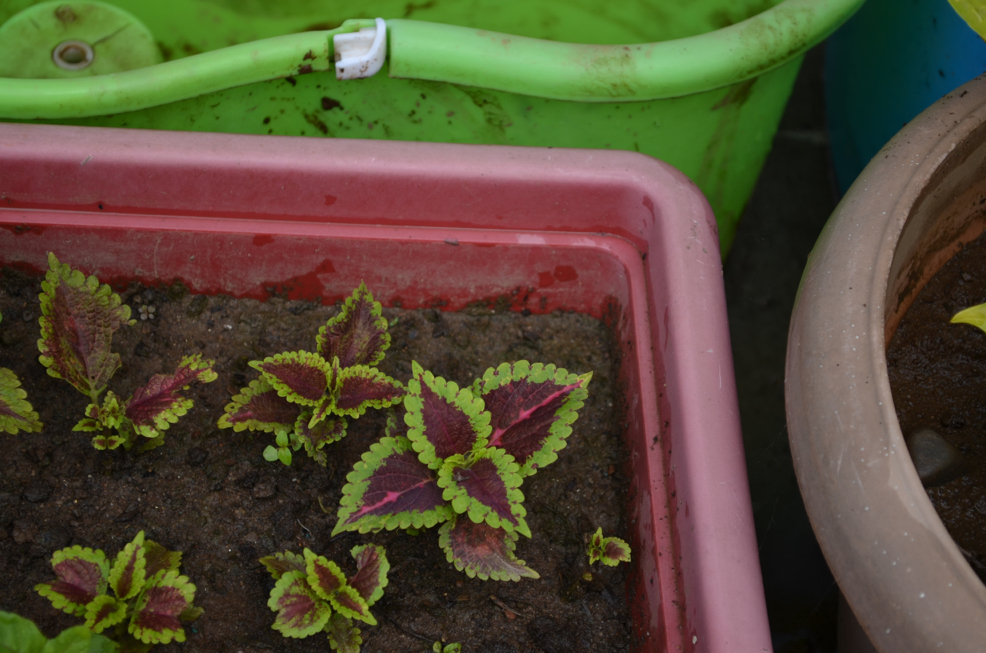
Bear in mind, as mentioned above, cultivars do not always come true from seed.
Softwood cuttings of coleus root relatively easily, though you can use a rooting hormone to improve success rates if you wish.
Place cuttings in a glass of water, or in a moist yet free-draining medium, around the edges of a pot to root.
Then once strong roots have formed, place each cutting into its own pot to grow on.
Frequent Growing Problems
Coleus growing outside in summer is rarely troubled by pests and disease.

Indoors, like other houseplants, coleus can experience problems such as whitefly, scale insects or mealybugs.
Legginess
Indoor-grown coleus may become leggy if it does not receive adequate light.

You can also cut back growing tips in summer, perhaps taking cuttings for propagation, to keep the plant bushier.
Flowers can also be pinched off if you wish to encourage plants to put their energy into foliage growth.
Saving A Damaged Coleus
If your coleus plant does not seem to be thriving or even looks like it is dying, all is not necessarily lost.
In certain circumstances, you may be able to revive your plant.
If your plant is wilting, the first thing to check is that you have watered it enough.

If the soil or growing medium is dry, watering may be enough to bring it back to good health.
Unfortunately, you may not be able to save your plant if it is suffering from root rot or frost damage, so make sure you meet the plant’s environmental needs and care for it as discussed above to keep it happy, healthy and attractive over the years to come.
References
- 1Coleus | plant. (2023, March 6). Encyclopedia Britannica. Retrieved March 14, 2023, from https://www.britannica.com/plant/coleus
- 2Paton, A., Mwanyambo, M., Govaerts, R., Smitha, K., Suddee, S., Phillipson, P. B., Wilson, T., Forster, P. I., & Culham, A. (2019). Nomenclatural changes in Coleus and Plectranthus (Lamiaceae): a tale of more than two genera. PhytoKeys, 129, 1–158. https://doi.org/10.3897/phytokeys.129.34988
- 3Red dead-nettle. (n.d.). The Wildlife Trusts. Retrieved March 14, 2023, from https://www.wildlifetrusts.org/wildlife-explorer/wildflowers/red-dead-nettle
